T-2 and HT-2 Toxin Damage in 2017 Wheat
Jenny Rodgers
June 20, 2017
Since weather in the Midwestern US has been sporadic so far this year, predictions for the 2017 crop harvest are still speculative for upcoming trends. An effective tool for predicting potential problems is the Fusarium Risk Assessment Tool, which can be found at http://www.wheatscab.psu.edu/. This tool uses specific flowering dates along with detailed weather information to provide a visual prediction map that can be viewed regionally or in detail at the county level.

Pictured: Pre-Harvest Missouri Wheat. From Left to Right – Wheat bundle that sustained no water damage (high hill area), Wheat bundle that sustained no water damage (low lying area), Wheat bundle partially submerged in water (water half up the stalk), Wheat bundle completely submerged in water.
Use testing resources wisely.
With the increased rainfall and flooding experienced throughout the Midwest, one of the biggest concerns this season is Fusarium infection. Fusarium molds represent a large class of molds that can form under a variety of different weather conditions producing an array of different mycotoxins. There are 17 different Fusarium species that can be associated with Fusarium Head Blight (FHB). Fusarium can cause reduced grain yield along with decreased quantity and quality of the wheat’s kernel. Due to the effects of the various Fusarium contaminants, farmers are faced with the difficult decision of what to do with the affected crop. They are left with the following options:
- Turn the affected fields into insurance and possibly be able to salvage the areas by keeping fields planted to use as a cover crop to improve soil fertility for future seasons.
- Harvest the fields with the knowledge that, due to the small kernel size, they will produce lower bushel weight.
- Use the affected crops as silage.
| Wheat Sample | T-2 Toxin (ppb) | HT-2 Toxin |
|---|---|---|
| Submerged | 42 | 284 |
| Partially Submerged | 56 | 105 |
| No Water Damage (low lying field) | ND | ND |
| No Water Damage (high lying field) | ND | ND |
While T-2 and HT-2 toxins are produced by Fusarium molds, DON may still be present in the 2017 harvest. In our area and other areas throughout the Midwest, finding T-2 and HT-2 Toxin in winter wheat is much less frequent under the growing and flooding conditions that it was exposed to. The heavy rains and flooding in our local area allowed wheat to stand in flooded fields for one to two weeks before water could recede. For the wheat pictured above, these conditions were conducive to T-2 and HT-2 Toxin production.
As harvest approaches, please remember to test your crops for the presence of mycotoxin contamination. The extra upfront cost may end up saving you in the end from cross-contaminated fields and unhealthy animals.
About Trilogy
Trilogy is a food and feed safety laboratory specializing in mycotoxins, mycotoxin binder analysis, biogenic amines and animal drug residue testing. Trilogy Analytical Laboratory opened its doors in 1999 when its founders recognized a need in the mycotoxin industry for quick result turn-around utilizing reliable reference methods provided in an analytical setting. One of the main pillars of Trilogy’s strategy is to operate using a comprehensive quality program that we can rely on to ensure performance parameters are met every single time. From this philosophy the Trilogy line of quality products was born with the mycotoxin industry in mind.
Media Contact: Lynette Hischier, l.hischier@trilogylab.com



